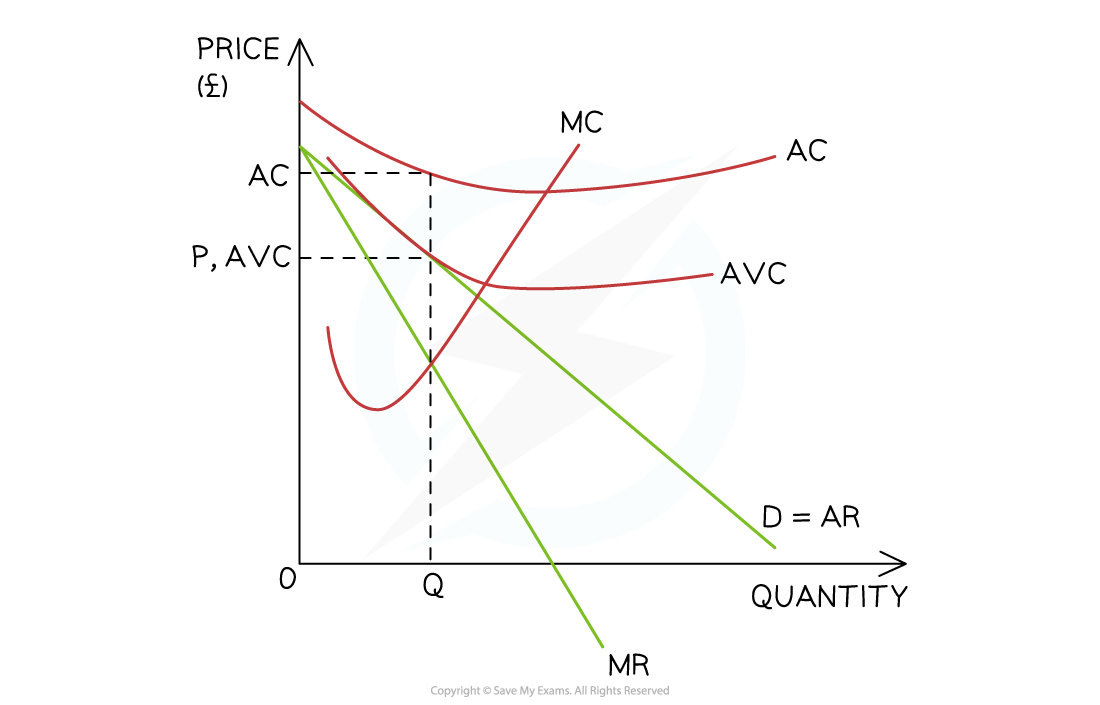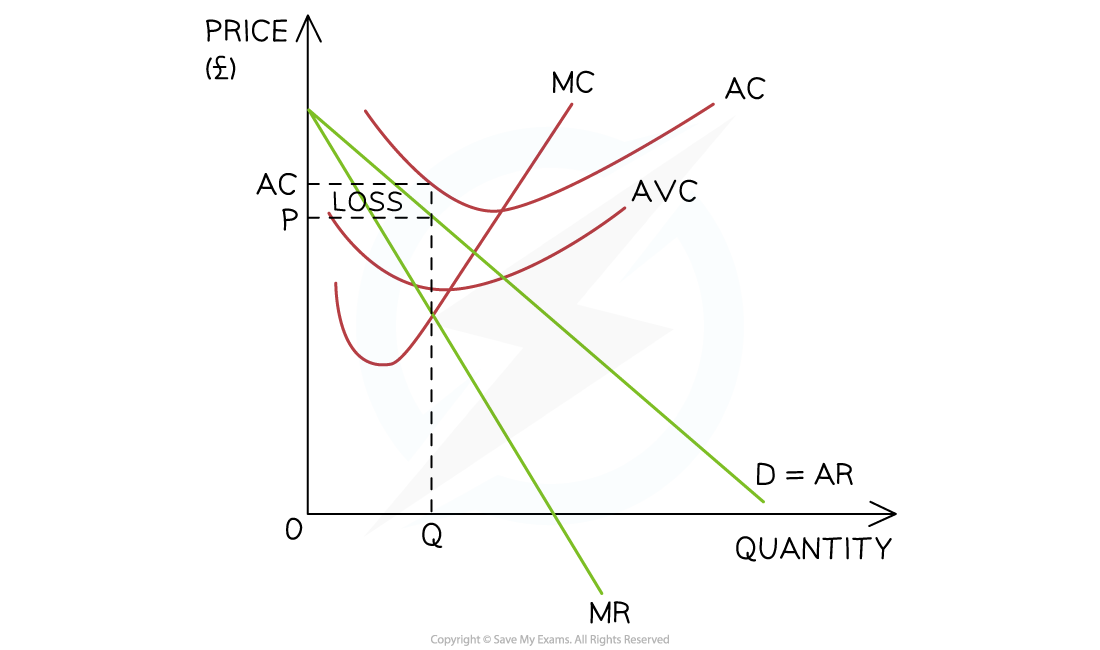- 翰林提供学术活动、国际课程、科研项目一站式留学背景提升服务!
- 400 888 0080
Edexcel A Level Economics A:复习笔记3.3.4 Normal Profits, Supernormal Profits & Losses
Condition for Profit Maximisation
- To maximise profit firms should produce up to the level of output where marginal cost (MC) = marginal revenue (MR)
Calculations To Demonstrate the Profit Maximisation Rule
| Output | MR (£) | MC (£) | Addition to Profit |
| 5 | 50 | 32 | +18 |
| 6 | 50 | 36 | +14 |
| 7 | 50 | 50 | 0 |
| 8 | 50 | 68 | -18 |
Observations
- With the 7th unit of output, MC = MR & no additional profit can be extracted by producing another unit
- Up to the 6th unit of output, MC < MR & additional profit can still be extracted by producing an additional unit
- From the 8th unit of output, MC > MR & the firm has gone beyond the profit maximisation level of output
- It is making a marginal loss on each unit produced beyond the point where MC = MR
Normal Profit, Supernormal Profit & Losses
- When calculating costs, Economists consider both the explicit and implicit costs of production
- Explicit costs are the costs which have to be paid e.g raw materials, wages etc.
- Implicit costs are the opportunity costs of production
- This is the cost of the next best alternative to employing the firm's resources
- E.g. if an investor puts £1m into producing bicycles & they could have put it in the bank to receive 5% interest, then the 5% represents an implicit cost
- Implicit costs must be considered as entrepreneurs will rationally reallocate resources when greater profits can be made elsewhere
- Profit = total revenue (TR) - total costs (TC)
- Total costs include explicit and implicit costs
- Normal profit occurs when TR = TC
- This is also called breakeven
- Supernormal profit occurs when TR > TC
- A loss occurs when TR < TC
Calculations To Demonstrate Profits
| Output | TR (£) | TC (£) | Profit (TR - TC) |
| 5 | 150 | 70 | 80 |
| 6 | 180 | 96 | 84 |
| 7 | 220 | 220 | 0 |
| 8 | 250 | 270 | -20 |
Observations
- Supernormal profit occurs up to the 6th unit of output
- Normal profits occur at the 7th unit
- From the 8th unit, the firm is making a loss
Short-run & Long-run Shut-down Points
- Firms do not always make a profit & may endure losses for a period
- Entrepreneurs often keep firms going in the hope that market conditions will change & demand for their products will increase leading to profitability
- This raises the question, 'when is it the best time for a firm to shut down?'
- The shut-down rule provides the answer by considering both the long-run & short-run periods
The Short-run Shut Down Point
- In the short-run, if the selling price (average revenue) is higher than the average variable cost (AVC), the firm should keep producing (AR > AVC)
- If the selling price (AR) falls to the AVC it should shut down (AR = AVC)

A firm should shut down in the short-run if the selling price (AR) is unable to cover the AVC
Diagram analysis
- The firm produces at the profit maximisation level of output (Q) where MC=MR
- At this level, the P = AVC
- This means that there is no contribution towards the firm's fixed costs
- The selling price literally only covers the cost of the raw materials used in production
- There is no point in continuing production & the firm should shut down
- This means that there is no contribution towards the firm's fixed costs
The Long-run Shut Down Point
- In the long-run, if the selling price (AR) is higher than the average cost (AC) the firm should remain open (AR > AC)
- if the selling price (AR) is equal to or lower than the average cost (AC), the firm should shut down (AR = AC)

A firm should shut down in the long-run if the selling price (AR) is unable to cover the AC
Diagram analysis
- The firm produces at the profit maximisation level of output (Q) where MC=MR
- At this level, P < AC
- It could continue operating in the short-run as the AR > AVC, but in the long-run they are making a loss & the firm will shut down
转载自savemyexams
站内搜索
竞赛真题免费下载(点击下载)
在线登记
最新发布
© 2024. All Rights Reserved. 沪ICP备2023009024号-1





